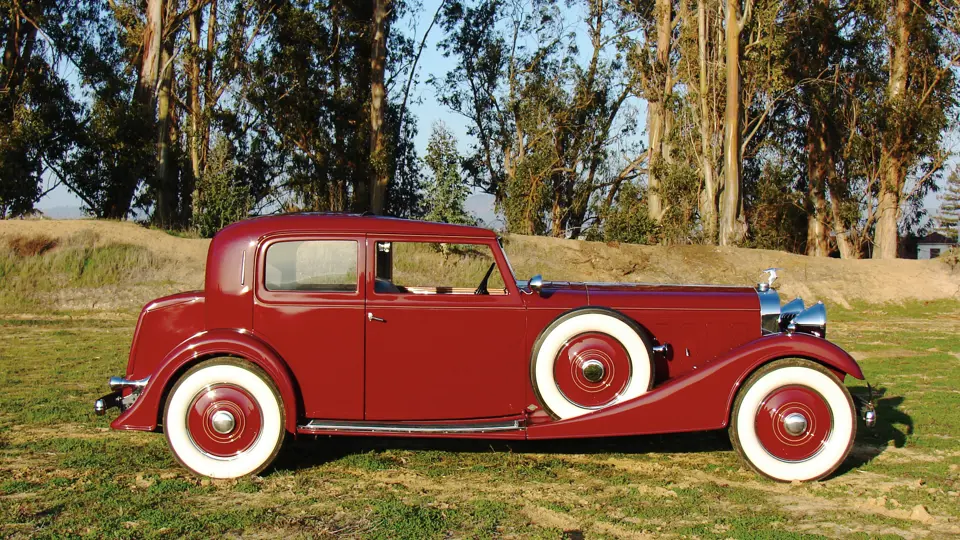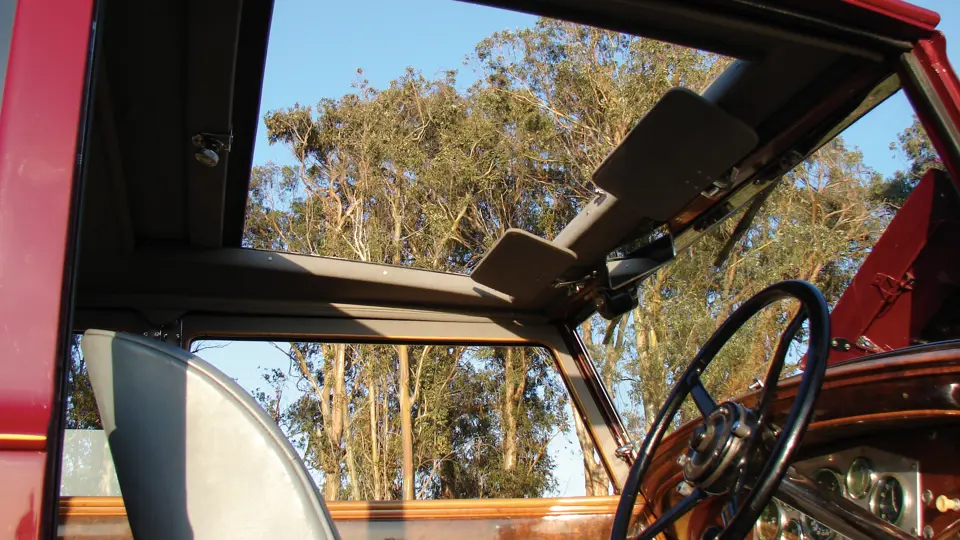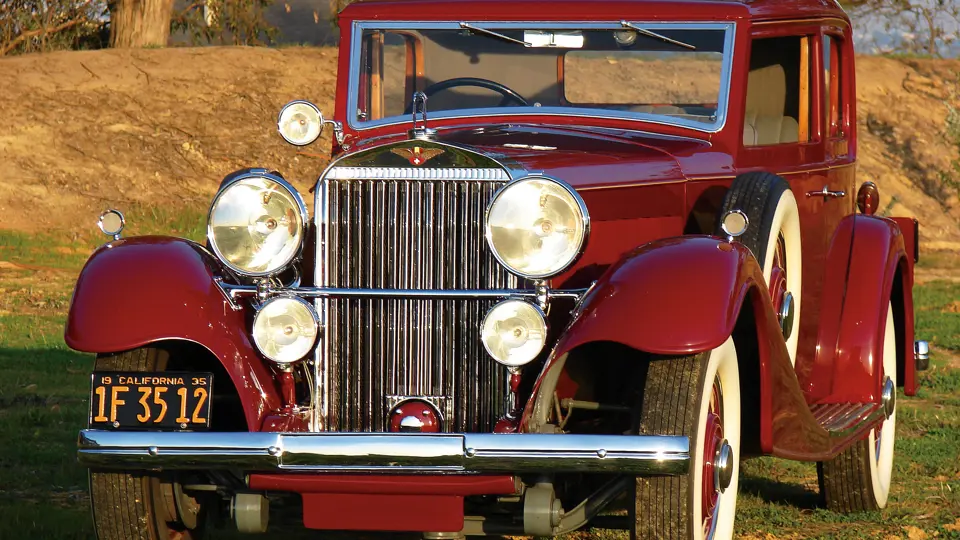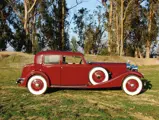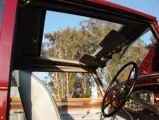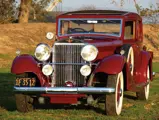220 bhp, 9,424 cc overhead valve V-12 engine with dual ignition, three-speed manual gearbox, solid front axle and live rear axle with semi-elliptic leaf springs, and four-wheel servo-assisted mechanical drum brakes. Wheelbase: 146"
• One of approximately 40 surviving J-12s
• Attractive “pillarless post” design
• Recent, thorough engine rebuild and mechanical overhaul; absolutely tour ready
As the name implies, Hispano-Suiza was a cosmopolitan marque, with Swiss and Spanish origins and a parallel manufacturing base in France. The Swiss engineer Marc Birkigt had designed the Barcelona-built Castro, which became the basis for the first Hispano-Suiza of 1904. Over the years, he developed a strong reputation for building everything from T-head fours, overhead-cam engines, a water-cooled V-8, and also the innovative H6, which was described by British historian T.R. Nicholson as “the last word in advanced transport for the rich.”
Mindful of the developments in multi-cylinder engines going on in the United States and elsewhere in Europe, Marc Birkigt was determined to build one of his own. In 1929, he began work on what would become the J-12. The engine was a new design, a “square” V-12 with a bore and stroke of 100 mm, influenced by his early engineering experience. A vast displacement of nearly 9.5-liters and convex pistons resulted in a horsepower of 220, and rubber engine mounts were adopted for the first time.
According to Johnnie Green’s The Legendary Hispano Suiza, “Shortly after its introduction, Charles Faroux drove from Paris to the Riviera and back, into the Champs Elysees showrooms, where, on a white sheet, the J-12 stood with not a single oil stain to show evidence of her journey. Such was the precision of Hispano-Suiza engineering.” Surviving factory photos punctuate this point by showcasing the high tolerances yielded from exceptionally smooth castings.
On September 18, 1931, The Autocar road-tested the new J-12 at the hallowed Brooklands circuit. The glowing report notes that the car did a complete lap of the track at 95 mph, with a top speed of 108.67! According to the author, “Even 70 or 80 mph or so represents an almost ambling speed on this astonishing car…indeed, it will do just about 80 mph on second gear, still without any fuss, the gear itself being dead silent, and over 50 mph on first gear; the gear ratios are quite unusually high as a whole.”
Factory order number 2112 was placed on October 15, 1935; chassis 14022 was subsequently delivered to Kellner to be fitted with this conduite interieure sport, or four-place pillarless sedan. It was finished in black and cream and returned to the factory on November 21 to be delivered to its new owner, whose name is believed to be Violet. It was imported to the United States in October 1955 and was subsequently acquired by Daniel Evans “Hap” Motlow, one of the four brothers who inherited the Jack Daniels distillery in 1947, after the passing of their father, Lemuel O. Motlow.
This example of Mark Birkigt’s engineering masterpiece is offered from the collection of an automotive connoisseur who owns a number of grand classics, including four Hispano-Suizas. In his ownership since 1993, it was given a thorough engine rebuild and mechanical overhaul, which was completed in 2009. This work included a rebuild of the radiator and water pumps, replacement of all wheel bearings, a full suspension rebuild, and a full rebuild of the braking system. Although there are a number of luxury marques from the period capable of reaching high speeds, getting the tons of rolling mass to stop is another story. The braking system on the J-12 is highly advanced for its day, attributable, according to The Autocar, “to the famous Hispano-Suiza friction-type mechanical servo.”
Birkigt’s V-12 displays the subtle styling typically associated with the V-16 Cadillac, but in the case of the Hispano-Suiza twelve, the result is even cleaner and more streamlined, owing to the designer’s aeronautical engineering background. Flanking the rear of the powerplant is the aluminum firewall, mirrored by aluminum splash pans below. The lightweight aluminum engine block and valve covers are painted a flat eggshell black, as are the delicate covers atop the carburetors, with very low overall visibility of the ancillary components. Interestingly, the electrical system is 12-volts, well ahead of its New World counterparts.
The last restoration of this Hispano-Suiza had been completed prior to entering the current ownership, but it was of very high quality and, most importantly, its original body remains mated to the original grey chassis on which it was originally placed, without any modifications. The red exterior with yellow pinstriping sports such features as a built-in trunk, trafficators mounted in the formal closed quarter, and dual side-mounted spare tires with pedestal mirrors. The existence of rear doors is belied by the lack of an exterior door handle, and the notable “pillarless post” design by Kellner aids entry via the rear door, due to the lack of a B-pillar. Chassis 14022 also retains its original wire wheels as well as the original wheel discs, which have been restored and installed on the car. Minimal use of chrome includes only the bumpers, radiator shell, windshield frame, and Phares-Besnard headlights complemented by Marchal “gooseneck” taillights.
The grey leather interior with matching grey carpeting is accented by a beautifully varnished wooden dash and door trim with inlay. Although it shows some sign of use, it has held up extremely well, owing in part to the careful maintenance it has received. A luxury feature in its day, the front seats can be independently adjusted forward and backward, accommodating a contemporary driver of almost any height, and the large sunroof creates a truly open-air experience for the passengers.
An amazing array of different body styles are represented on the various extant Hispano-Suiza chassis. Not surprisingly, a total of 112 different coachbuilders from nine different countries placed their creations on the Hispano-Suiza chassis, 36 of whom are from France. Of 120 J-12s built, it is believed that approximately 40 remain, leaving each one nearly unique. This formal pillarless sedan is one of the more conservative examples, similar in style to the Bugatti Type 41 Royale Coupe by Kellner; its first owner, Violet, was likely someone of wealth, who desired a more discreet conveyance than the flashier nouveau riche.
Despite its size, the artists at Kellner did an exceptional job of managing to create a balance between the proportion of the passenger compartment with that of the cowl, hood, and radiator. The advanced engineering of the J-12 engine, along with the high gear ratios and advanced steering geometry, creates one of the best long-distance touring cars in existence. In current ownership, it has covered approximately 5,000 miles prior to the 2009 rebuild and another 8,000 in the three years since, including multiple trips on the Pebble Beach Motoring Classic, where it drove to Seattle for the start of the tour and motored back.
The owner states unequivocally, “I have owned many classics over the years, and without a doubt, this J-12 is the best running, driving example of them all,” which is a testament to the owner’s love and appreciation of this car above the others in his stable. This car is also featured on page 177 of Ernest Schmid d’Andres’ Hispano Suiza. The parting note on the J-12, and 14022 in particular, in light of its proven superior touring capability, is best left to the journalists at The Autocar. “This car is a remarkable combination of what may be termed town carriage features, such as an ability to run at little above walking pace on top gear in complete silence, yet accelerating away at once very swiftly indeed with the smooth, even torque of the 12-cylinder engine…it is, in fact, limited in scope really only by road conditions.”
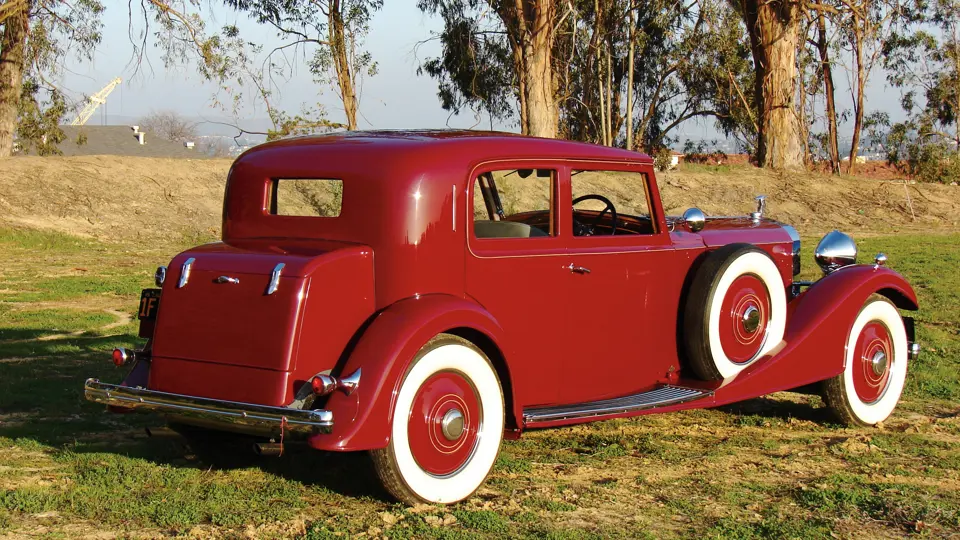

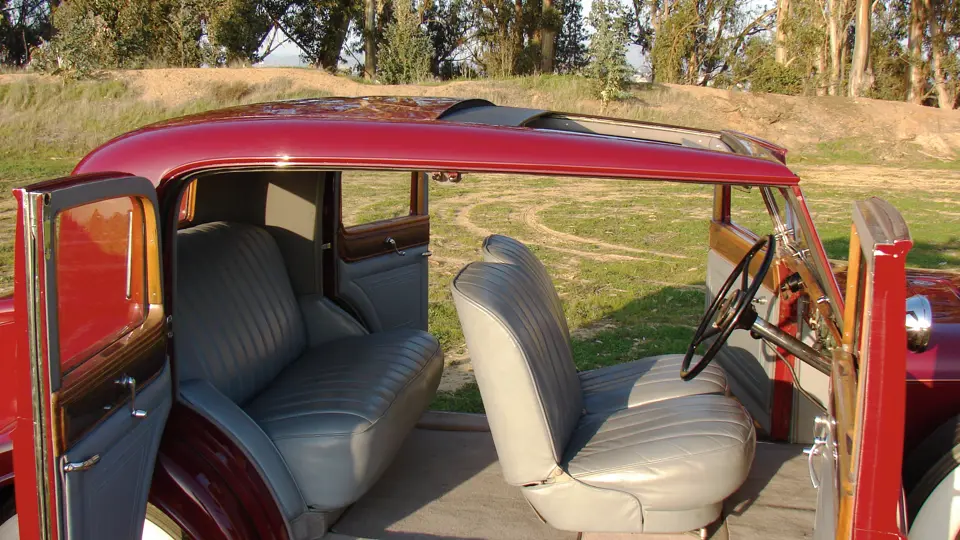

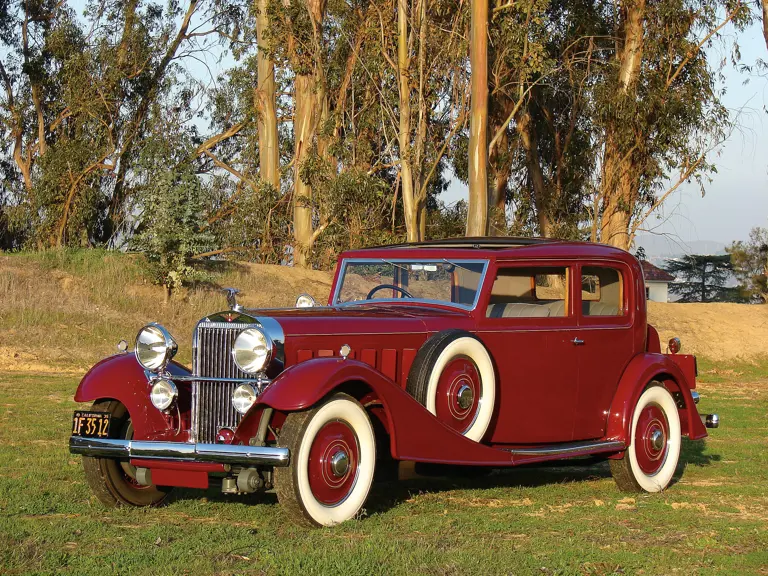

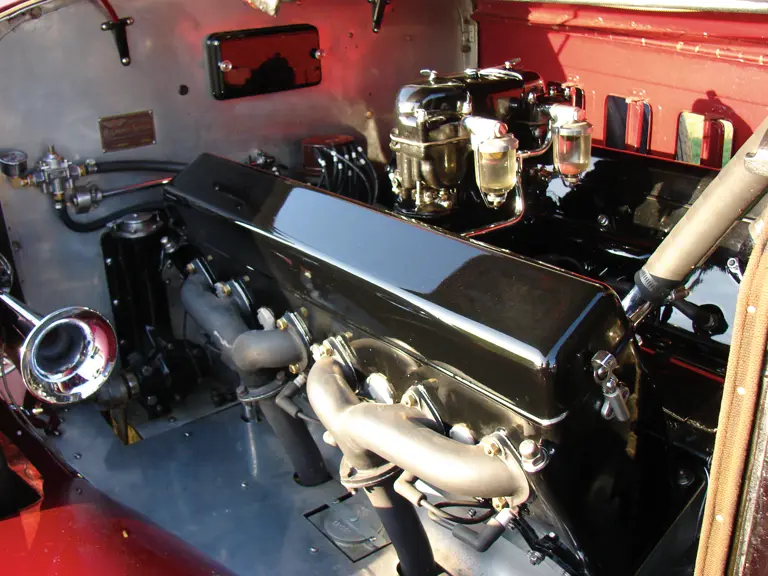


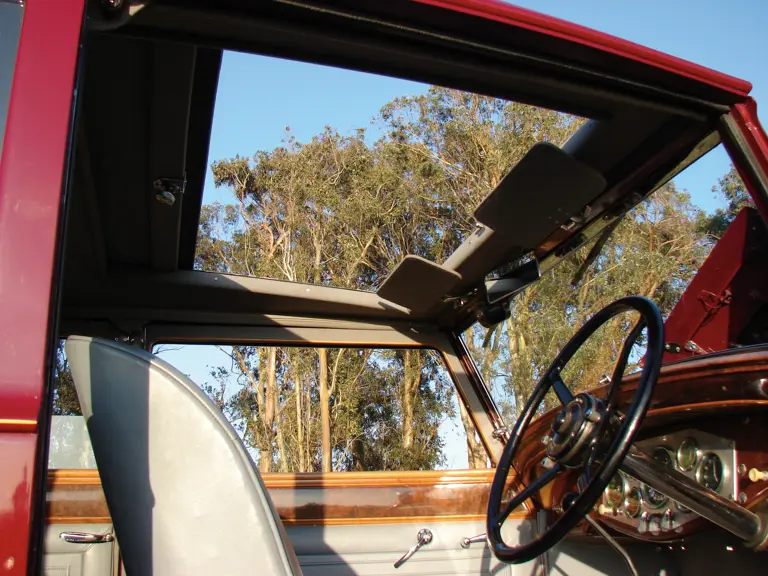
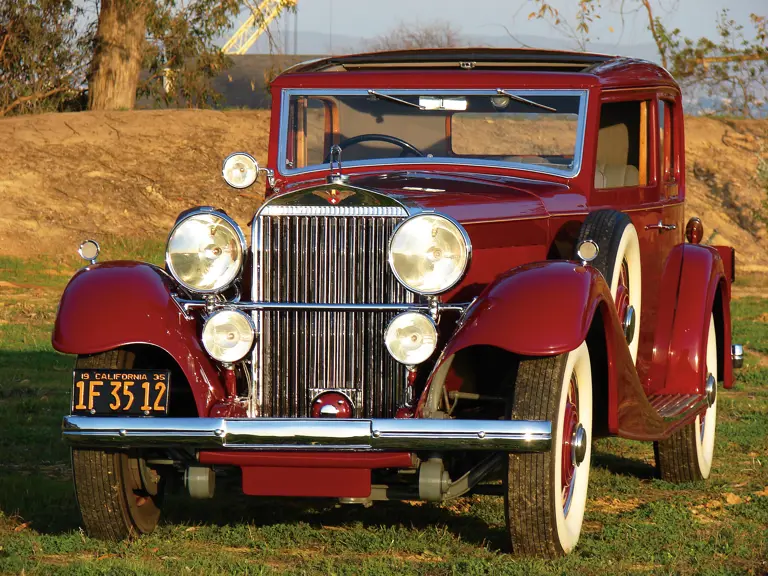
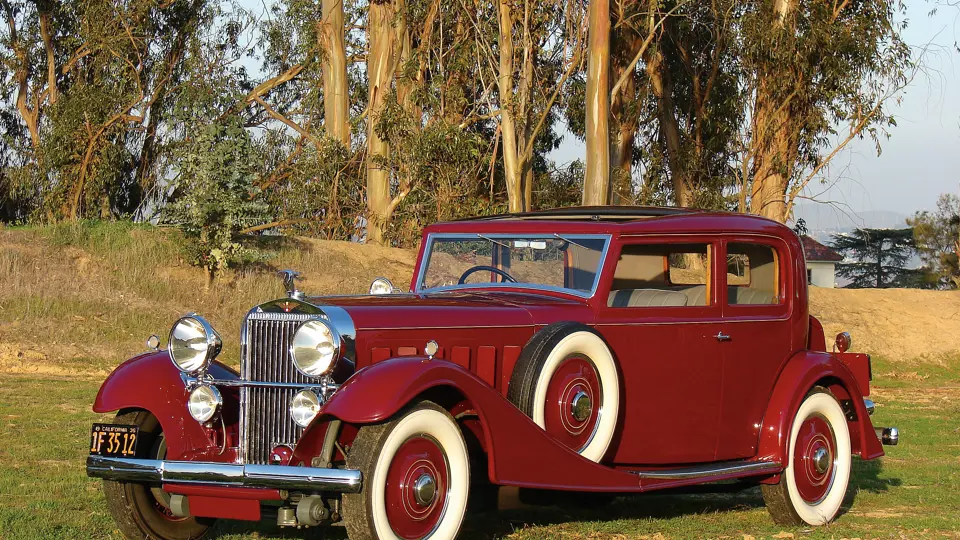
 | Monterey, California
| Monterey, California
